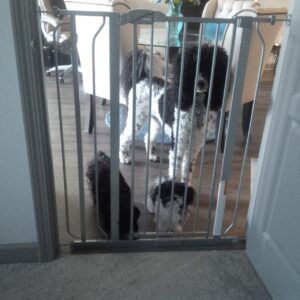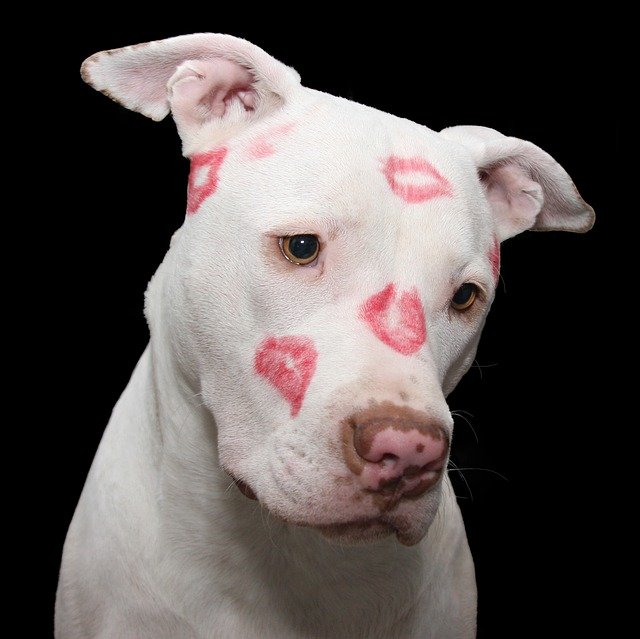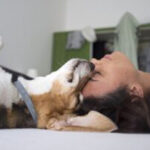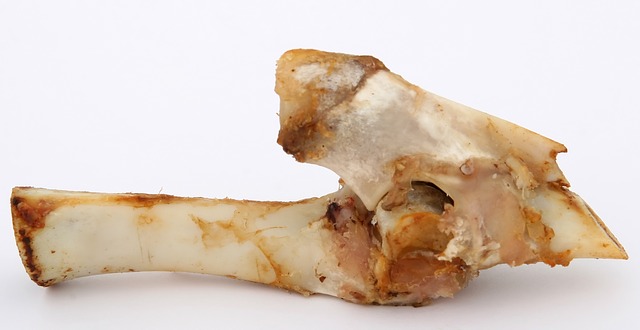 The moment a puppy, older dog, or rescued dog comes into our homes and into our hearts, we must take full responsibility for its health, well-being, and socialization skills by giving it an abundance of love, understanding, and guidance. Your dog’s life is dependent upon you, and—at the risk of sounding heavy—sometimes it’s a matter of life or death.
The moment a puppy, older dog, or rescued dog comes into our homes and into our hearts, we must take full responsibility for its health, well-being, and socialization skills by giving it an abundance of love, understanding, and guidance. Your dog’s life is dependent upon you, and—at the risk of sounding heavy—sometimes it’s a matter of life or death.
For some of us, caring for a dog comes naturally, and some of us will learn as we go, but it should never be at your dog’s expense. You never want your dog to pay the penalty of trial and error, as some errors cannot be undone.
Dogs are not people too, and they cannot safely consume every type of food that we take for granted. Here are a few you may not be aware of like alcohol, avocados, candy, chocolate (baker’s and dark being the worst), coffee, tea, onions, garlic, grapes, macadamia nuts, raisins, salt, green potatoes, and potato skin, apple seeds, fruit pits, dietary products including sugar-free gum, caffeine, and tobacco. Peanut butter is a favorite treat for dogs, but some manufacturers use Xylitol, which is extremely toxic to canines. This is NOT a complete list.
 If you have any experience with baby-proofing your home, it’s not a far reach to puppy-proof it. If there are rooms where you DO NOT want your dog to enter, gates are the answer. Gates are available at every height and width; they can be free-standing, pressure-mounted, or wall-mounted and made of wood, metal, or plastic. They range from inexpensive to high-end designer enfluenced.
If you have any experience with baby-proofing your home, it’s not a far reach to puppy-proof it. If there are rooms where you DO NOT want your dog to enter, gates are the answer. Gates are available at every height and width; they can be free-standing, pressure-mounted, or wall-mounted and made of wood, metal, or plastic. They range from inexpensive to high-end designer enfluenced.
Once upon a time, when I was a kid, my father used two window shutters placed about an inch off the floor. They swung back and forth like saloon doors and hooked in the middle to keep them closed. It wasn’t a half-bad idea. Just think how creative you could be with a little help from a home improvement center.
An accident waiting to happen may not be obvious and can hide in plain sight like plants you would never suspect are poisonous. Less obvious hidden dangers may lurk behind closed cabinet doors and include prescription drugs, household chemicals, and insecticides. Make sure they stay behind closed doors where they belong.
Because love, a meal, and a warm blanket are not enough, keep the following information handy in your kitchen or taped inside a cabinet door for quick reference. This is by no means a complete list of all the hazards that need to be eliminated, but rather an informative beginning to a subject that might have us thinking, “Hmmm. I didn’t know that!”
 Prescription and over-the-counter drugs are highest on the list for cases of poisoning. Painkillers, cold and allergy medicines, antidepressants, vitamins, sleep aids, blood pressure meds, and diet pills can be lethal to dogs, even in small doses. Even dog-friendly pharmaceuticals must be dosed correctly by your veterinarian. Please check with your vet first before administering any medications to your dog.
Prescription and over-the-counter drugs are highest on the list for cases of poisoning. Painkillers, cold and allergy medicines, antidepressants, vitamins, sleep aids, blood pressure meds, and diet pills can be lethal to dogs, even in small doses. Even dog-friendly pharmaceuticals must be dosed correctly by your veterinarian. Please check with your vet first before administering any medications to your dog.

Household cleaners and chemicals are highly toxic. Detergents, stain removers, soaps, disinfectants, antiseptics, bleach, antibacterial agents, toilet/drain/oven cleaners, mold and mildew removers, counter, floor, and window cleaners, as well as personal bathing, shampooing, and hygiene products, and even toothpaste, mouthwash, hand-sanitizer, and suntan lotion, maybe exceedingly harmful to our pets. Any chemical used on a car, lawn, swimming pool, septic tank, or cesspool should be considered highly toxic. They should be handled and stored appropriately. Keeping chemical products in bins inside cabinets can help reduce easy access if a cabinet is unintentionally left open. Childproof locks add extra protection.
 Pest control and insect repellents are not only toxic when consumed directly by your dog, but the consumption of a poisoned animal can result in secondary poisoning. Fly bait, mothballs, and ant traps may look like chew toys to your dog. Flea, tick, heartworm control medication, and mosquito repellents used by humans and pets can be highly toxic. Oral tick and flea control, as well as heart-worm medications, should be stored safely – especially since they’re made to be palatable to your pet.
Pest control and insect repellents are not only toxic when consumed directly by your dog, but the consumption of a poisoned animal can result in secondary poisoning. Fly bait, mothballs, and ant traps may look like chew toys to your dog. Flea, tick, heartworm control medication, and mosquito repellents used by humans and pets can be highly toxic. Oral tick and flea control, as well as heart-worm medications, should be stored safely – especially since they’re made to be palatable to your pet.
 Indoor and outdoor plants, whether common year-round or seasonal holiday varieties, may pose a danger if ingested. It’s imperative that you recognize the symptoms of poisoning in case your dog decides to eat any of them. Prevention is always best.
Indoor and outdoor plants, whether common year-round or seasonal holiday varieties, may pose a danger if ingested. It’s imperative that you recognize the symptoms of poisoning in case your dog decides to eat any of them. Prevention is always best.
 Some of the names you may recognize are Lilies, Azaleas, Rhododendrons, Schefflera, Kalanchoe, Sago Palm, Ferns, Ivy, Hyacinth, Narcissus, Daffodil, Oleander, Dieffenbachia, Jasmine, Mistletoe, Poinsettias, and Easter lilies. Know what’s in your home and garden.
Some of the names you may recognize are Lilies, Azaleas, Rhododendrons, Schefflera, Kalanchoe, Sago Palm, Ferns, Ivy, Hyacinth, Narcissus, Daffodil, Oleander, Dieffenbachia, Jasmine, Mistletoe, Poinsettias, and Easter lilies. Know what’s in your home and garden.
It’s hard to remember all the details outlined in this column. Here are a few suggestions to help keep your dog safe.
1) Make a list of “undesirable” products.
2) Make these products inaccessible to your dog.
3) Post your veterinarian’s phone number on the fridge and put it in your cell phone’s emergency contacts.
4) Ask your vet for his 24-hour emergency referral phone number and address, and know how to get there. If you have a GPS, store the information.
5) Post your local Poison Control office number and ANIMAL POISON CONTROL CENTER at 888-4ANI-HELP (888-426-4435). A fee may be charged to your credit card.
Love your pet within a sphere of safety and well-being.






